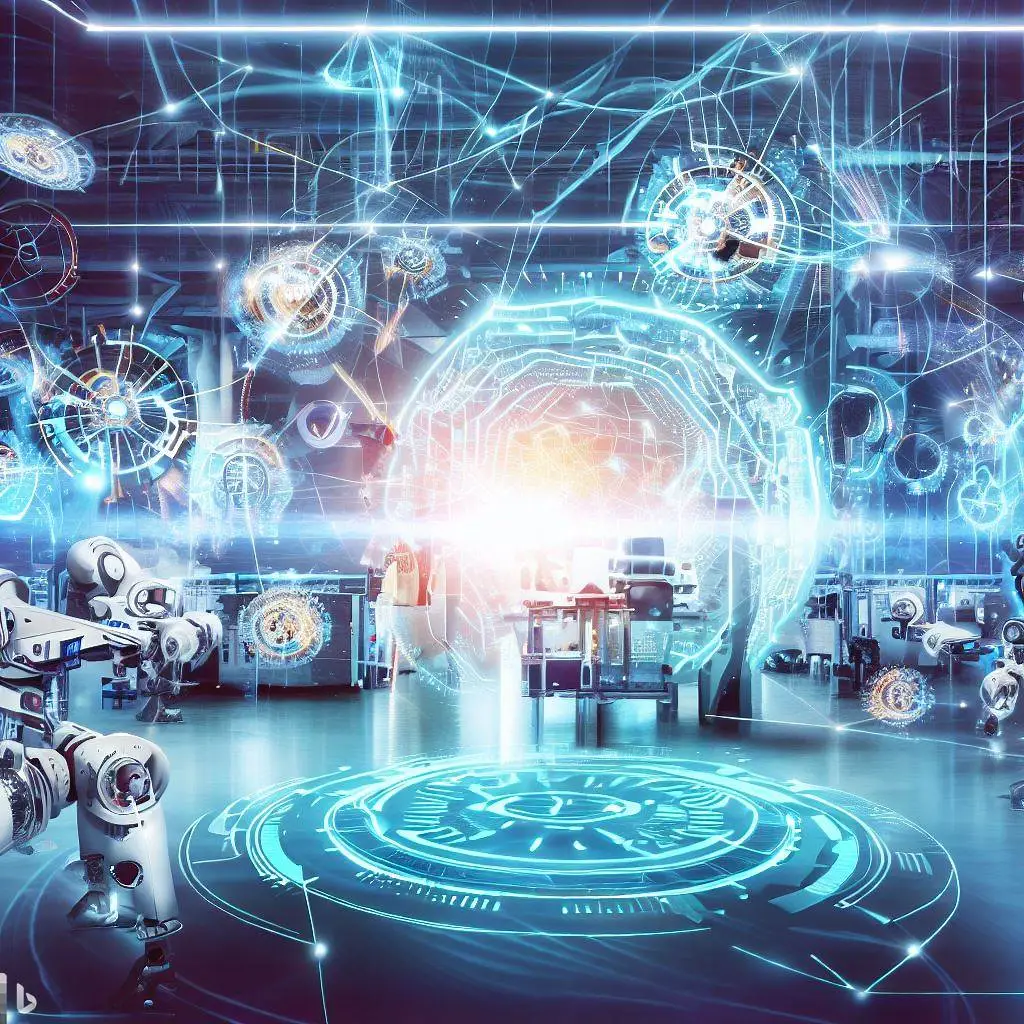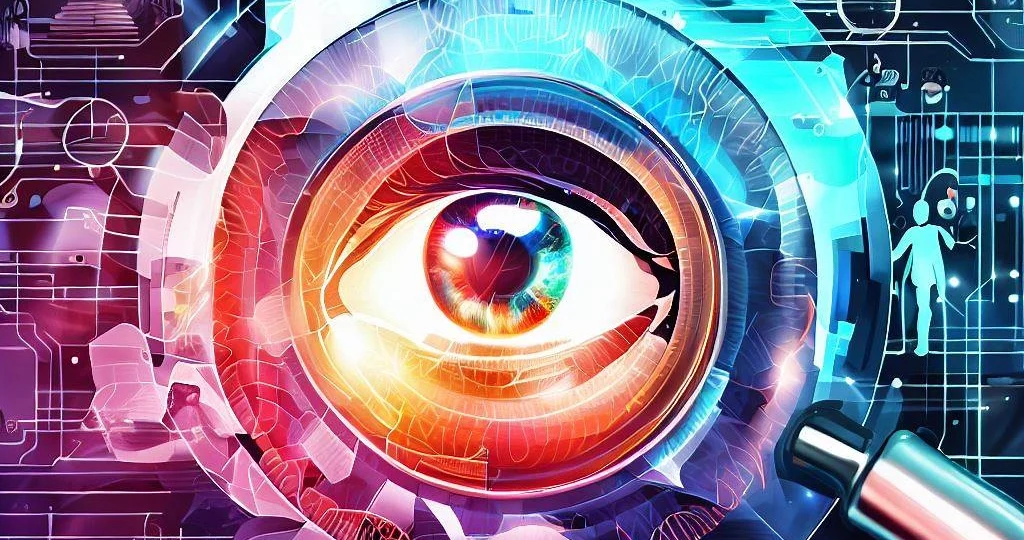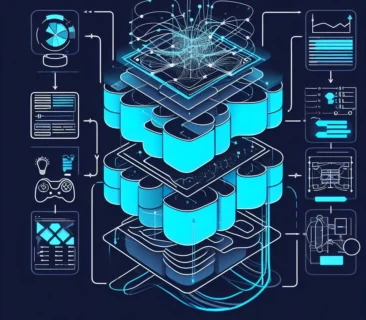Welcome to NextechPulse, where we delve into the forefront of technological advancements. In this article, we embark on an enlightening journey into the world of “Consumer Insights and Behavior Analysis through AI Innovations.” As seasoned tech enthusiasts and bloggers with a decade of experience, we’re excited to unravel the transformative potential of AI in understanding and predicting consumer actions.
Join us as we explore the benefits, challenges, and future trends of AI-driven consumer insights, providing you with a comprehensive understanding of how businesses can leverage this cutting-edge technology to make informed decisions and stay competitive in an ever-changing market landscape. Let’s dive into the fascinating realm where artificial intelligence meets consumer behavior analysis, shaping the way businesses connect with their audiences in an increasingly digital world.
1. Introduction to AI-powered consumer insights
In today’s fast-paced world, understanding what consumers want and how they behave is like holding the key to a treasure chest for businesses. That’s where AI, or Artificial Intelligence, comes in. AI is like a super-smart assistant that can help businesses figure out what people like and dislike.
Imagine you run a small bakery. You want to know which cakes are the most popular among your customers. AI can help you analyze the data from your sales and customer reviews to tell you which cakes are flying off the shelves and why. It’s like having a detective that solves the mystery of your customers’ tastes.
AI, What’s That?
Now, you might be wondering, “What is AI, and how does it do all this magic?” Well, AI is like the brain of a computer. It can learn from information and make decisions like a human, but much faster. It’s not a person, though; it’s a program that runs on computers. Think of it as a really smart robot that can think and learn on its own.
Why Consumer Behavior Matters
Understanding consumer behavior is like having a map to navigate through a dense forest. It helps businesses make better decisions about what products to offer, how to price them, and where to sell them. Without this map, businesses would be lost, making guesses about what people want.
Let’s say you own a clothing store. You want to know why your sales of winter coats suddenly dropped. AI can help by analyzing data from your store and the weather forecast. It might discover that people stopped buying coats because the weather got unexpectedly warm. Armed with this knowledge, you can adjust your inventory and marketing strategies accordingly.
The AI Revolution
In the past, understanding consumer behavior was a bit like trying to predict the weather without satellites or weather apps. Businesses had to rely on surveys, gut feelings, and luck. But now, thanks to AI, things have changed dramatically.
AI can sift through massive amounts of data in seconds. It can analyze everything from what people buy online to what they post on social media. It can spot patterns and trends that humans might miss. It’s like having a super-powered microscope to examine the tiniest details of consumer behavior.
AI in Action
To see how AI works in action, let’s take a look at a real-life example. Imagine you’re an online bookstore, and you want to recommend books to your customers based on their interests. AI can examine their past purchases, the books they’ve rated highly, and even the books they’ve looked at for a long time. With this information, AI can suggest books that are likely to pique their interest.
This personalized approach not only keeps customers happy but also increases sales. It’s like having a personal shopper who knows your taste in books better than you do. AI can do this for various products, from movies to clothes to electronics.
The Future of AI and Consumer Insights
So, what does the future hold for AI and consumer insights? It’s an exciting frontier. As AI continues to grow smarter, it will become even better at understanding consumers. It might even predict what people want before they know it themselves.
Businesses that embrace AI will have a competitive edge. They’ll be able to offer products and services that cater to individual preferences, leading to happier customers and higher profits. But, as we’ll explore later in this article, there are challenges and ethical considerations to address when using AI in consumer insights. It’s not all sunshine and rainbows, but the potential benefits are enormous.
2. Benefits of AI-driven insights
Now that we’ve dipped our toes into the waters of AI and consumer insights, let’s take a closer look at the wonderful benefits this technology brings to the table.
1. Smart Decision Making
Imagine you’re the captain of a ship, and you have to navigate through a stormy sea. AI is like a super-precise GPS system for your business decisions. It can analyze mountains of data to help you make smart choices.
For instance, a big retail store might use AI to decide how much of a particular toy to order for the holiday season. AI looks at past sales data, current trends, and even factors like the economy and weather. It then suggests the perfect amount to order, minimizing waste and maximizing profits.
2. Personalized Experiences
Have you ever been amazed by how your favorite streaming service knows exactly what shows you’ll love? That’s AI at work. It analyzes your viewing history and recommends content tailored just for you.
This personalization isn’t limited to entertainment. AI can also help e-commerce websites suggest products that match your preferences. It’s like having a personal shopper who knows your style inside out.
3. Faster and More Efficient
Imagine you’re working in a busy kitchen, and you need to chop a mountain of vegetables. AI is like a super-fast chef’s knife that can slice and dice those veggies in seconds.
In the business world, AI speeds up tasks that would take humans ages to complete. It can analyze customer feedback, process orders, and respond to inquiries in the blink of an eye. This efficiency means happier customers and more time for businesses to focus on growth.
4. Predicting Trends
Do you remember the time everyone suddenly started wearing neon clothes again, and you wondered, “How did that happen?” AI is like a trend-spotting expert. It can sift through social media, news, and sales data to predict the next big thing.
For businesses, this is gold. They can stock up on trendy products, adjust marketing strategies, and stay one step ahead of the competition. It’s like being a trendsetter in the fashion world, but in the business realm.
5. Improved Customer Service
Imagine you have a question about your bank account, and you need help ASAP. AI-powered chatbots are like friendly bank employees who are always ready to assist you. They can answer your questions 24/7 without a hint of tiredness.
These chatbots can understand your queries and provide solutions in real-time. No more waiting on hold for hours or waiting for a reply to your email. It’s like having a personal assistant at your beck and call.
6. Cost Savings
Running a business can be expensive, like trying to fill a leaky bucket with water. AI is like a magic patch that stops the leaks. By automating tasks, reducing errors, and optimizing processes, AI helps businesses save money.
For instance, in manufacturing, AI can predict when a machine might break down and schedule maintenance before it happens. This prevents costly downtime. It’s like having a crystal ball that sees into the future of machinery.
3. Cutting-edge AI technologies

Now, let’s venture into the exciting realm of the technologies that make AI-driven consumer insights possible. Think of these technologies as the gears inside a powerful machine.
1. Machine Learning
Machine learning is like the brain of AI. It’s the part that learns from data and gets smarter over time, just like you do when you practice a new skill. Imagine you’re teaching a robot to recognize different types of fruits. You show it lots of apples, oranges, and bananas. Machine learning is what allows the robot to figure out the differences and make accurate predictions.
In the world of consumer insights, machine learning helps AI systems understand patterns in data. For example, it can recognize that people tend to buy ice cream more during hot summer months. This information is gold for businesses planning their stock.
2. Natural Language Processing (NLP)
NLP is like the language translator for AI. It enables computers to understand and work with human language. Think of it as a bridge between the way we communicate and the way computers think.
For instance, when you chat with a virtual assistant like Siri or Alexa, NLP helps those assistants understand your spoken words and respond appropriately. In consumer insights, NLP can analyze customer reviews, social media posts, and even customer service chats to understand what people are saying about a product or service.
3. Data Analytics
Data analytics is like the detective of AI. It investigates large amounts of data to uncover hidden insights. Imagine you have a giant puzzle with thousands of pieces. Data analytics is what helps you put those pieces together to reveal the big picture.
In the world of consumer insights, data analytics can sift through massive datasets containing information about what people buy, where they shop, and how often they make purchases. It can then identify trends and correlations that can inform business decisions.
4. Computer Vision
Computer vision is like the eyes of AI. It allows machines to “see” and understand images and videos, just like you do when you recognize a friend’s face in a photo. For example, it’s used in facial recognition technology.
In consumer insights, computer vision can analyze images and videos posted on social media to understand how consumers interact with products. It can detect whether people are happy or unhappy when they use a product, which is crucial feedback for businesses.
5. Big Data
Big data is like a massive library filled with information about everything. It refers to the immense amount of data available today, from online shopping transactions to social media posts to GPS locations. Imagine trying to read all the books in that library in a single day – impossible, right?
AI thrives on big data because it provides a rich source of information to learn from. It’s like having a gigantic puzzle with endless pieces. The more data AI has access to, the better it becomes at understanding consumer behavior.
In summary, the cutting-edge technologies behind AI-driven consumer insights include machine learning, natural language processing, data analytics, computer vision, and the vast world of big data. These technologies work together like a well-oiled machine to help businesses gain a deep understanding of their customers.
4. Case Studies
To truly grasp the impact of AI-driven consumer insights, let’s explore some real-world cases where businesses have reaped the benefits of these technologies.
1. Amazon’s Product Recommendations
Amazon, the online retail giant, is a prime example of AI in action. When you shop on Amazon, you’ll notice personalized product recommendations based on your past purchases and browsing history. This isn’t a coincidence; it’s AI analyzing your behavior to suggest products you’re likely to buy.
For instance, if you’ve been looking at hiking gear and bought a camping tent in the past, Amazon’s AI might recommend hiking boots and other outdoor equipment. This approach has significantly boosted Amazon’s sales and customer satisfaction, as shoppers are more likely to discover products they love.
2. Netflix’s Content Suggestions
Netflix, the streaming service we all know and love, uses AI to keep us glued to our screens. Have you ever wondered how Netflix knows what shows and movies to recommend to you? It’s all thanks to AI.
Netflix analyzes your viewing history, the genres you prefer, and even factors like the time of day you watch. Based on this data, it suggests content that aligns with your tastes. This personalized experience keeps subscribers engaged and satisfied, reducing the chances of canceling their subscriptions.
3. Spotify’s Playlist Personalization
If you’re a music enthusiast, you’ve likely experienced AI at work on Spotify. When you open the app, you’re greeted with playlists tailored to your musical preferences. Spotify’s AI algorithms consider your listening history, favorite artists, and even the tempo of songs you enjoy.
For example, if you often listen to rock music, Spotify’s AI might create a playlist of classic rock hits for you. This level of personalization enhances the user experience and encourages users to spend more time on the platform, discovering new music.
4. Coca-Cola’s Inventory Management
Even outside the realm of entertainment, AI has found its place. Coca-Cola, the iconic beverage company, uses AI for inventory management. Imagine the complexity of managing the production and distribution of countless bottles and cans worldwide.
AI helps Coca-Cola predict demand, optimize production schedules, and ensure that shelves are always stocked. This not only reduces costs but also minimizes the chances of stores running out of Coca-Cola products, keeping customers satisfied.
These case studies demonstrate how AI-driven consumer insights benefit businesses across various industries. Whether it’s suggesting products, recommending content, curating playlists, or managing inventory, AI has proven its worth by enhancing customer experiences and improving operational efficiency.
Conclusion:
As we conclude our exploration of “Consumer Insights and Behavior Analysis through AI Innovations,” it’s evident that AI has become an invaluable ally for businesses seeking to understand and cater to their customers better. The benefits are clear: smart decision-making, personalized experiences, efficiency, trend prediction, improved customer service, and cost savings.
We’ve ventured into the fascinating world of AI technologies such as machine learning, natural language processing, data analytics, computer vision, and the vast realm of big data. These technologies work together seamlessly, like cogs in a well-oiled machine, to decode the intricate patterns of consumer behavior.
The case studies of Amazon, Netflix, Spotify, and Coca-Cola have illuminated the real-world impact of AI in diverse industries, from e-commerce and entertainment to beverage manufacturing. These success stories highlight the transformative power of AI in elevating customer satisfaction, increasing profits, and streamlining operations.
Yet, as with any powerful tool, there are challenges and ethical considerations to address. We must navigate the complexities of data privacy, bias in AI algorithms, and the responsible use of technology. The road ahead requires a balance between innovation and responsible implementation.
As we move forward into this AI-driven era of consumer insights, businesses must embrace these technologies as valuable tools for growth while upholding ethical standards and safeguarding the privacy and well-being of their customers. The future is promising, filled with endless possibilities for those who harness the potential of AI to forge deeper connections with consumers and create lasting value.
At NextechPulse, we remain committed to shedding light on the ever-evolving landscape of technology and innovation. We hope this journey into AI-driven consumer insights has provided you with valuable insights and inspired you to explore the limitless horizons of technological advancement. Thank you for joining us on this enlightening expedition, and we look forward to continuing our exploration of the next technological frontier.




